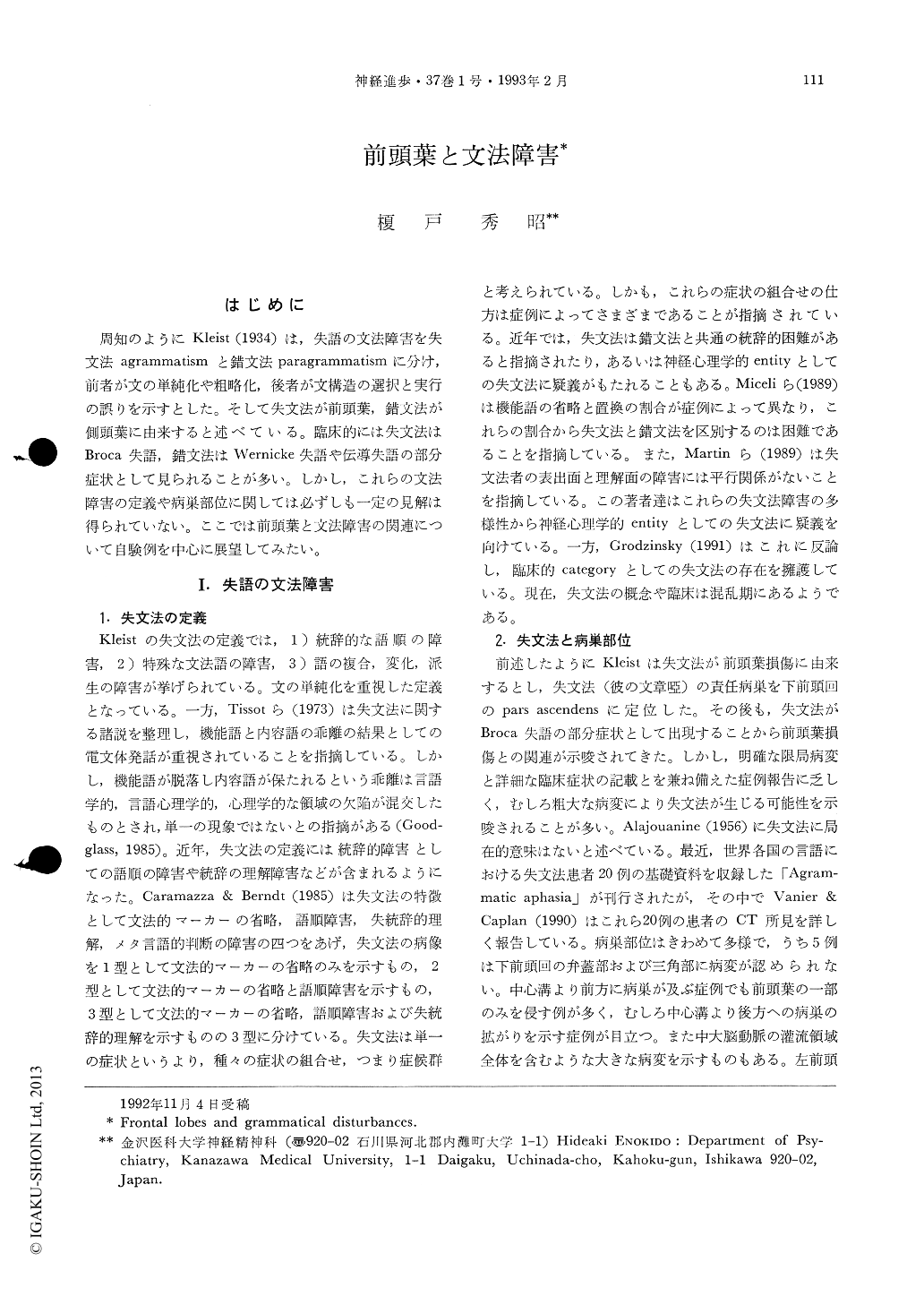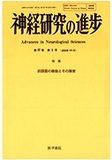Japanese
English
- 有料閲覧
- Abstract 文献概要
- 1ページ目 Look Inside
はじめに
周知のようにKleist(1934)は,失語の文法障害を失文法agrammatismと錯文法paragrammatismに分け,前者が文の単純化や粗略化,後者が文構造の選択と実行の誤りを示すとした。そして失文法が前頭葉,錯文法が側頭葉に由来すると述べている。臨床的には失文法はBroca失語,錯文法はWernicke失語や伝導失語の部分症状として見られることが多い。しかし,これらの文法障害の定義や病巣部位に関しては必ずしも一定の見解は得られていない。ここでは前頭葉と文法障害の関連について自験例を中心に展望してみたい。
Kleist (1934), as well known, divided the grammatical disturbances of aphasia into agrammatism and paragrammatism, and pointed out agrammatism is originated to frontal lobe and paragrammatism to temporal lobe. Also in the every day's neurological clinic agrammatic speech is observed more often on the recovery phase of Broca's aphasia. So the close relationships between frontal lobe damage and agrammatic disorders had been focused by many aphasiologists. No cases, however, having the precise descriptions on the symptoms of agrammatism with the demarcated lesions located within frontal lobes were seen in a large body of research on agrammatism. Conversely, a variety of lesions in agrammatic patients have been pointed out by many authors. The relationships between frontal lobe damage and grammatical disturbance are reviewed and discussed based on the neuropsychological literature and the observations of our own cases, as the following titles.

Copyright © 1993, Igaku-Shoin Ltd. All rights reserved.


